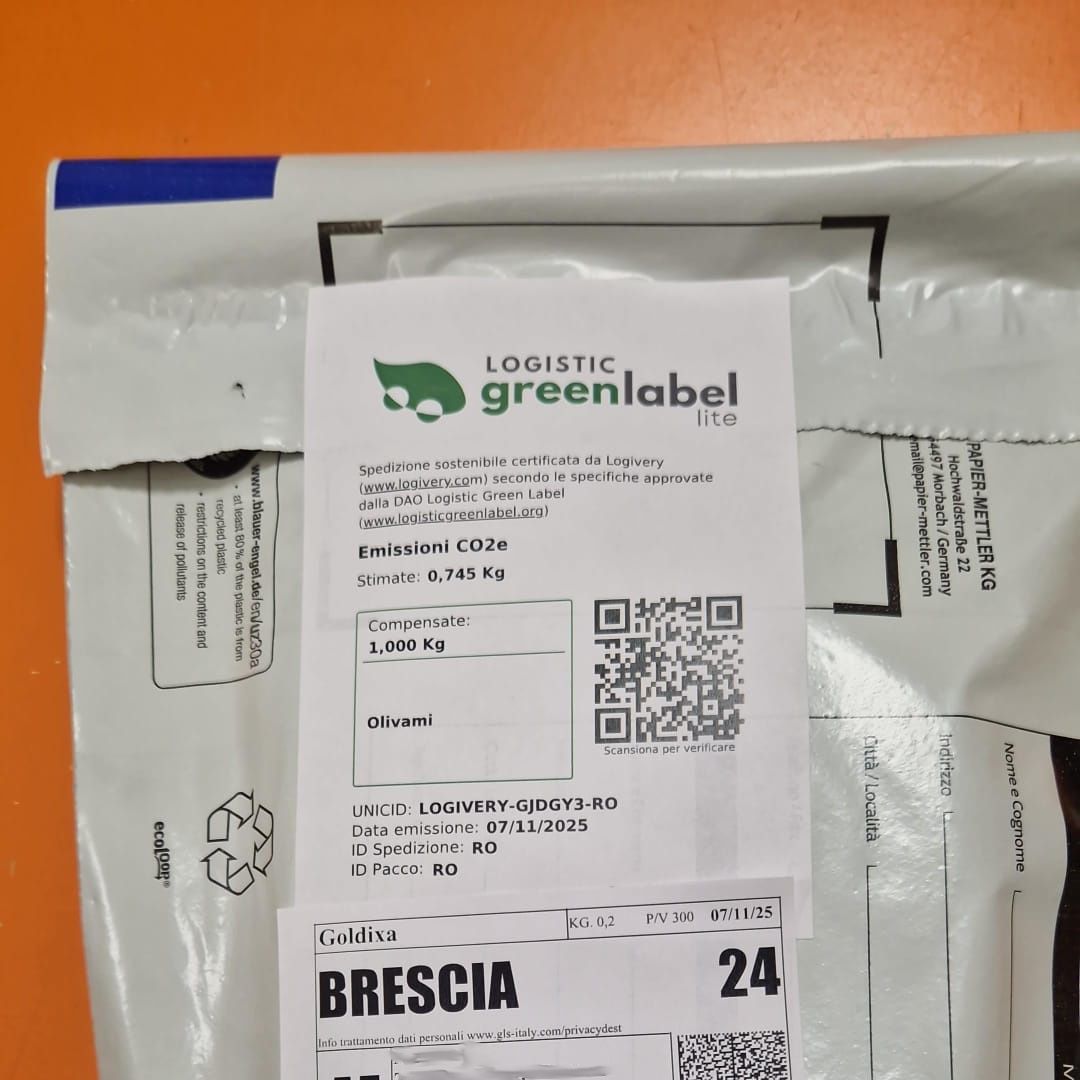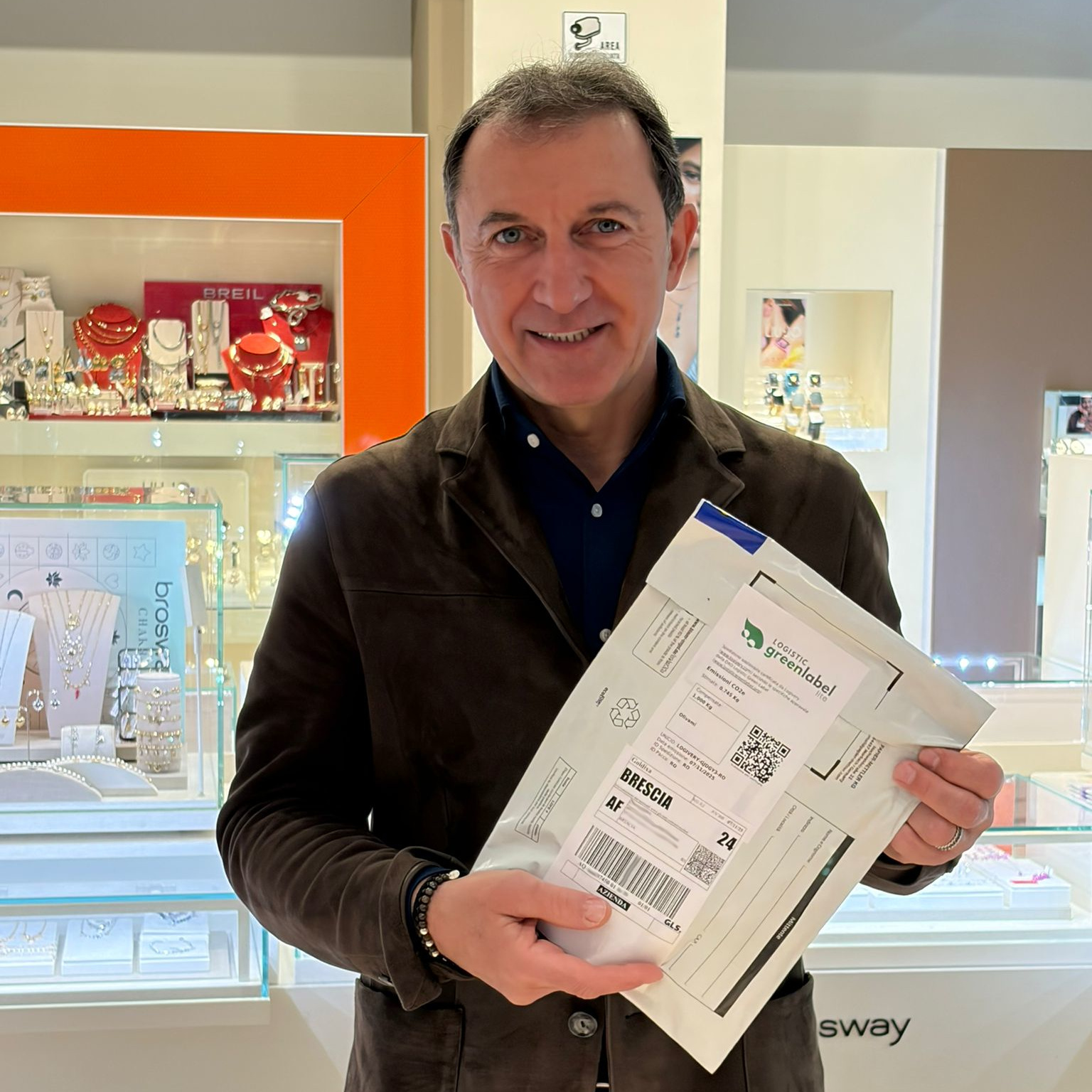
Launch of the Logistic Green Label Lite protocol trial
The DAO Logistic Green Label announces the official launch of the experimental phase of the Logistic Green Label Lite protocol, an initiative aimed at verifying the technical consistency, methodological robustness, and practical effectiveness of the model for measuring and offsetting emissions generated by shipping activities.
This experimentation phase represents a crucial step in the validation process of the protocol, which has been defined and approved through collegial deliberations of the DAO, with votes recorded on blockchain to ensure transparency, traceability, and methodological independence.
For the initial operational phase, the first experimental provider, Logivery, selected a real case: the company Oro & Argento srl, which applied the Logistic Green Label Lite protocol to the shipments of its eCommerce goldixa.com through the Logivery Cloud platform. Logivery has implemented within its infrastructure the complete process of measuring, offsetting, and issuing the Logistic Green Label Lite. This application makes it possible to collect concrete data and observe the behaviour of the model in an authentic operational context, providing essential insights for fine-tuning parameters and guidelines.

The compensated shipment was handled by the carrier GLS, which in this phase was not directly involved, as the process for issuing the Logistic Green Label is designed to be agnostic with respect to carriers. Emissions are estimated based on the type of transport vehicle used and an estimate of the number of transits through sorting warehouses.
The compensation was carried out by contributing to the Olivami project. Olivami ETS is a non-profit association from Salento which, through olive tree adoption and CO₂ offset projects, promotes the reforestation of Salento in the post-Xylella context, supporting the landscape, olive oil production, agricultural traditions, and local farmers.
Objectives of the Experimentation
The experimentation is structured as a scientific field evaluation process with three main objectives:
- To assess the robustness of the emissions calculation methodology, which considers measurable variables such as weight, volume, distance, and mode of transport.
- To verify the effectiveness of the offsetting process, analysing the consistency between the estimated requirements and the selected environmental interventions.
- To test communication transparency through the production and publication of Logistic Green Label Lite labels, complete with the data required for public verification.
This structure makes it possible to measure the efficiency of the entire cycle – calculation, offsetting, and communication – under real operating conditions.
Application of the Protocol in the Oro & Argento srl / goldixa.com Case
Oro & Argento srl has fully adopted the four phases defined by the Logistic Green Label Lite protocol, allowing the DAO and Logivery to analyse its concrete application:
- Emission estimation: calculation based on logistics variables, using the emission factors specified by the protocol.
- Selection and application of offsetting: choice of documented environmental projects consistent with the requirements of the model.
- Generation of the digital label: issuance of the Logistic Green Label Lite with an indication of the compensated amount, the calculation method, and the offset project.
- Public verification: publication of the label via a link or QR code accessible to the shipment recipient.
This implementation makes it possible to assess the stability of the protocol, the clarity of the data communicated, and the comprehensibility of the information for end users.
Methodological Insights from the Experimentation
Applying the protocol in a real environment makes it possible to observe more precisely several dynamics that are relevant from a technical and scientific perspective.
- Replicability. The procedure has proved applicable without any need to modify pre-existing logistics processes, confirming the “plug-and-operate” nature of the Lite version of the protocol.
- Consistency with major emission models. The estimates produced are consistent with principles adopted in international standards for carbon footprint assessment, while remaining compatible with a simplified and accessible model.
- Transparency and prevention of greenwashing. The digital label, structured with standardised and verifiable information fields, meets the requirements of clarity and verifiability emerging in environmental communication regulations.
Role of the DAO in Protocol Governance
Governance of the Logistic Green Label Lite protocol remains fully entrusted to the DAO Logistic Green Label, which oversees:
- the scientific validation of calculation methodologies;
- the updating of emission parameters;
- the definition of criteria for selecting offset projects;
- the configuration of requirements for public verification;
- the voting and deliberation system recorded on blockchain, which ensures transparency and immutability of decisions.
The experimentation with Oro & Argento srl and the integration through Logivery provide valuable input for improving the quality of future versions of the protocol.
Conclusions
The launch of the experimentation phase of the Logistic Green Label Lite protocol represents a key step in the scientific and operational validation process of the model. The real-world application by Oro & Argento srl, through the Logivery Cloud platform, makes it possible to verify:
- the robustness of the emissions calculation;
- the consistency of the offsetting process;
- the transparency of the information provided to recipients;
- the practicality of the protocol in an authentic logistics context.
The DAO Logistic Green Label regards this experimentation as the first step towards broader adoption of the protocol, with the goal of making logistics processes more measurable, more responsible, and fully verifiable.


